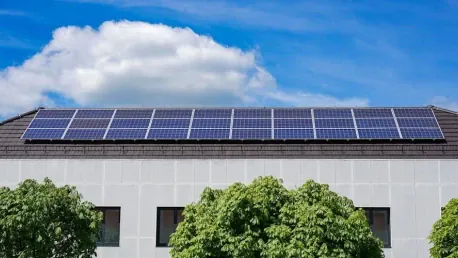The October 2024 report by the International Energy Agency (IEA) provides comprehensive insights and forecasts for the photovoltaic (PV) energy sector through 2030. By 2030, renewable electricity generation is predicted to exceed 17,000 TWh globally, marking an almost 90% increase from 2023 and adequately meeting the combined demand of China and the United States. Key milestones are expected to be achieved in the next few years, notably with solar PV and wind generation collectively surpassing hydroelectric power in 2024, and renewable electricity outpacing coal by 2025. By 2029, solar PV will become the largest source of renewable energy, surpassing hydroelectric power.
Upcoming Milestones in Renewable Energy
Solar and Wind Power Surpassing Hydro
One of the notable milestones, as stated in the IEA report, is the projection that by 2024, solar PV and wind generation will collectively surpass hydroelectric power. This transition is monumental, considering hydroelectricity has long been a cornerstone of renewable energy. The anticipated shift underscores the significant advancements and investments in solar and wind technologies. These innovations have led to increased efficiency and reduced costs, making them more viable and attractive options for large-scale energy generation.
In China and the United States, both countries are leading the charge with substantial contributions to the surge in installed capacity for utility-scale projects. China, in particular, has tripled its capacity in a single year by accelerating large-scale PV plants in desert areas. The United States has also demonstrated remarkable progress, nearly doubling its large-scale PV installations in comparison to 2022. This aggressive expansion from the world’s two largest economies underscores the global commitment to renewable energy and the strategic importance of solar and wind power in achieving energy security and sustainability.
Renewable Electricity Outpacing Coal
By 2025, renewable electricity is expected to outpace coal, marking a significant shift in the global energy landscape. This milestone is indicative of the extensive efforts and investments channeled into renewable energy sources, driven by the urgent need to reduce carbon emissions and combat climate change. This transformation suggests that economies worldwide are prioritizing renewable energy infrastructure over traditional coal-fired power plants, recognizing the environmental and economic benefits associated with cleaner energy sources.
The increasing predominance of wind and solar power is supported by favorable policies and incentives in many countries. Additionally, technological advancements have played a crucial role in enhancing the efficiency and affordability of these renewable energy sources. Despite some regional variances in terms of installation rates and costs, the overall trend reflects a robust and sustained growth trajectory for renewables. The synergy between government initiatives, technological innovation, and market dynamics is fostering a conducive environment for the accelerated adoption of renewable energy on a global scale.
Regional Variances in Installation and Cost Trends
China’s Dominance in Solar PV Expansion
China continues to lead the global surge in solar PV installations, aided by its massive investments and strategic projects. The country’s focus on accelerating large-scale PV plants in desert areas has significantly contributed to the tripling of its capacity in 2023 alone. This aggressive expansion aligns with China’s broader objectives of reducing its carbon footprint and positioning itself as a global leader in renewable energy. The scale and pace of China’s solar PV projects set a benchmark for other nations aiming to enhance their renewable energy capacities.
While China’s progress is impressive, it is not isolated. The global rise in distributed solar PV grew over 60%, driven primarily by China and Europe. This widespread adoption underscores the growing recognition of the benefits of distributed solar systems, including increased energy security and reduced transmission losses. Europe’s commitment to renewable energy is also evident, although differing incentives and regulatory frameworks across the continent result in varied installation rates and cost trends. The interplay of policy, market dynamics, and technology continues to shape the renewable energy landscape in these regions.
Price Fluctuations and Market Dynamics
The cost of solar PV continues to decline globally, making it an increasingly competitive energy source. However, regional differences in market dynamics and regulatory environments lead to variances in installation costs and growth rates. For instance, India’s auction prices for utility-scale solar projects were among the lowest, with early 2024 prices reaching 34 USD/MWh, contributing to a global average of 40 USD/MWh. In contrast, Europe’s average was higher at 67 USD/MWh, reflecting the diverse market conditions and regulatory frameworks across the region.
In Europe, reduced incentives in Poland and lower auction volumes in Spain have influenced the anticipated 7% decline in annual capacity additions for 2024. Furthermore, the expansion pace of distributed solar PV is expected to slow in Spain and stabilize in Germany due to lower electricity prices compared to the spike witnessed in 2022 during Russia’s invasion of Ukraine. These fluctuations highlight the intricate balance between policy incentives, market conditions, and technological advancements that impact the growth and adoption of renewable energy sources regionally.
Conclusion
The October 2024 report by the International Energy Agency (IEA) delivers extensive insights and projections for the photovoltaic (PV) energy sector up to 2030. The report predicts that by 2030, global renewable electricity generation will surpass 17,000 TWh, which is an almost 90% increase from 2023 levels. This surge will be sufficient to meet the combined electricity demands of both China and the United States. Significant milestones are projected in the coming years, with solar PV and wind energy generation collectively surpassing hydroelectric power by 2024. Additionally, by 2025, renewable electricity is expected to outstrip coal. By 2029, solar PV is anticipated to become the largest source of renewable energy, overtaking hydroelectric power. This transition signifies a major shift in the global energy landscape, highlighting the rapid growth and adoption of cleaner, sustainable energy sources. The IEA’s projections underscore the critical role of renewable energy in meeting future global power needs effectively and sustainably.









